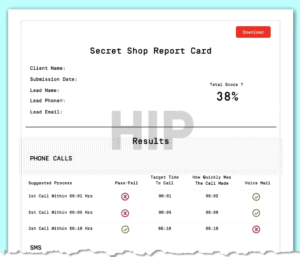I’m going to share with you an orthodontics horror story that happens every day at practices all around the nation. It starts like this.
“You’ve got mail!”
It’s 9:00 on a cold and snowy Tuesday morning when “Ding!” an incoming lead lands in the inbox of an orthodontics practice.
The front desk is busy getting the insurance info from the mom of an awkward young teenager named Ethan, here for his first visit. The phone rings; nobody answers.
Ethan and his mom head back to their seats, and the phone rings again. This time, the front desk answers on the first ring.
And then, “Ding!”
Another lead drops into the inbox while nobody is looking.
After lunch, one of the front desk team finally gets around to checking the morning’s emails and sees that four new leads came in between 10am and 1pm.
She starts to email one of the leads before getting sidetracked. Finally, around 3pm— six hours after the first two leads landed in your inbox— things slow down, and she tries to call each of the leads.
But none of them answer, so she writes them off and moves on…
On Friday afternoon, the doctor sits down to look at next week’s schedule. She sees the consultation calendar is looking pretty light. So she asks, “What happened? We had 25 leads come in from online ads this week. So why do we only have 2 appointments booked?”
And the front desk says, “It’s not our fault…these online leads are bad leads. They don’t answer the phone. I’m not even sure they’re real people. I think these ads are just a waste of money.”

Why do your online ortho leads not convert?
Every front desk thinks they’re doing “their best” to help you get new patients. And in many cases, they are.
After all, it’s not their fault if they haven’t been taught best practices and given clear direction for lead follow-up. But even when they know what they should be doing, they’re often so busy doing 5 different jobs that following up with leads immediately and answering every phone call is nearly impossible.
But when they don’t follow best practice and blame the leads instead of admitting their shortcomings, that amounts to sabotage of your growth.
I’m not saying you should fire them—everyone deserves a chance to improve.
But you cannot take your team’s own assessment of their performance at face value.
Everyone tends to exaggerate to avoid making themself look bad. And your team may even feel righteous indignation because they think the expectations you’ve set aren’t “realistic.” Change is hard. Inertia is powerful. And it’s natural for your staff to offer some resistance to new strategies.
But there’s really only one way to tell if your leaky funnel is because of your leads (it’s not) or if it’s due to poor internal procedures and less-than-ideal follow-up.
And that’s to secret shop your front desk to find out what they’re doing when you’re not watching.
Medical Mystery Shopping: An Orthodontist’s Secret Weapon
We’ve talked about the critical elements of converting leads into patients before, like the 72-Hour Rule and the 5×6 Method, so we won’t rehash all the details here.
But if your team doesn’t execute these strategies properly, then the strategies aren’t worth the digital ink they’re ‘printed’ on.
So can you know if your patients are doing what they’re supposed to? You need to test them.
And that’s where HIP’s medical secret shopping plays a key role for our partners. We’ve developed a tool to mystery shop our orthodontic practices every month, automatically.
We just enter a “lead” into their online form, and our software will track every attempt your office makes to reach them— text messages and incoming phone calls— and create a simple report to let you know how your office did.
The report looks like this:

How to use a medical mystery shop report
You shouldn’t use your mystery shop report to punish or embarrass team members. Instead, use it as a teaching and motivational tool.
It’s important that your front desk, or patient support team, understand just how critical these best practices are to your success. Once they know this matters to you, they’ll start to adapt their behavior accordingly.
You can also use it to motivate your team by setting up prizes or a bonus for exceptional performance. For example, we recently talked to a practice that slashed their missed call rate from 15% to under 3%, simply by incentivizing their patient care team to make it a priority.
If your team refuses to adapt, you may eventually need to make some changes. You need to know that your team is on-board with your plans and not sabotaging your growth. But we’d suggest you never make that kind of move based on secret shop reports alone.
Want to get started working with HIP’s Orthodontic Marketing Experts? Click Here



